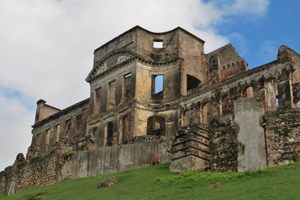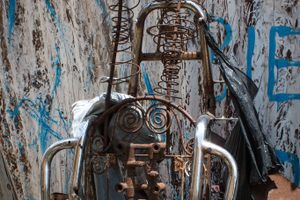About
War creates great art. You hardly ever hear that claim being made by the often-artsy peaceniks of the world, but it's true. Indelible, iconic images are a key result of almost any war, big or small, whether they be mesmerizing propaganda or works of evocative protest – but perhaps the creative field most benefitting from conflict (at least until the invention of the airplane bomber) is architecture.
Look no further than Haiti's Citadelle Laferrière for an example. Like so many pre-20th-century fortresses, the design of The Citadel, as it's known locally, is as striking as it is imposing.
Built on a mountaintop, as was the style in post-revolution Haiti, each aspect of the grand fort demonstrates an element of defensive strategy as much as it does a flourish of architectural innovation. The fort contained living quarters, cisterns and storage space designed to sustain 5,000 defenders for an entire year. As one travels along the road that circles up the mountain, it's obvious that each side of the citadel is unique – this is no box-shaped castle.
The rear of the citadel features a classic cylindrical rampart, the curved wall designed to stymie an enemy attack and prevent the scaling of the wall. The sides are constructed to drop off directly into the sheer mountainside, making attack from that angle virtually impossible. But the truly impressive feature is the front wall facing the road - sharp and triangular, puncturing the side of the mountain like the tip of a spear, presenting a limited profile to potential attackers.
Even the location itself is strategic – the high ground of mountaintops are regularly thought of as ideal for defense, but nowhere is this more important than a small island such as Haiti, where traditional coastal fortresses would be vulnerable to attack by ships at sea. Building forts on mountaintops wasn't just the Haitian style — it was a necessity.
Unfortunately, The Citadel never realized its potential as a defensive structure – built to defend against a potential return of the French army to re-enslave the newly freed Haitian people, the French did not return with force.
Now the impressive structure sits unused other than as a tourist attraction, designated a national park and an official UNESCO World Heritage Site – its 365 cannons still silent, it's walls still looming.
Related Tags
Know Before You Go
The Citadel is one of the most popular tourist destinations in Haiti. Directions to and history of the fortress are provided by self-appointed guides from the town of Milot. Visitors are encouraged to rent a horse for the uphill trek. The first portion of the seven-mile (11 km) trail is navigable by 4WD vehicle, although infrequent landslides and construction projects sometimes make this unreliable. From the mid-level parking lot, the second portion must be completed either on horseback or on foot. The entire seven-mile-trail starting in Milot, almost completely uphill, can be walked by experienced hikers who carry plenty of water. Most of the interior of the Citadel fortress itself is accessible to visitors, who may also climb the numerous staircases to the fortress's roof, which is free of guardrails. On a clear day, the city of Cap-Haïtien and the Atlantic Ocean can be seen to the north.
Published
April 24, 2012



























































